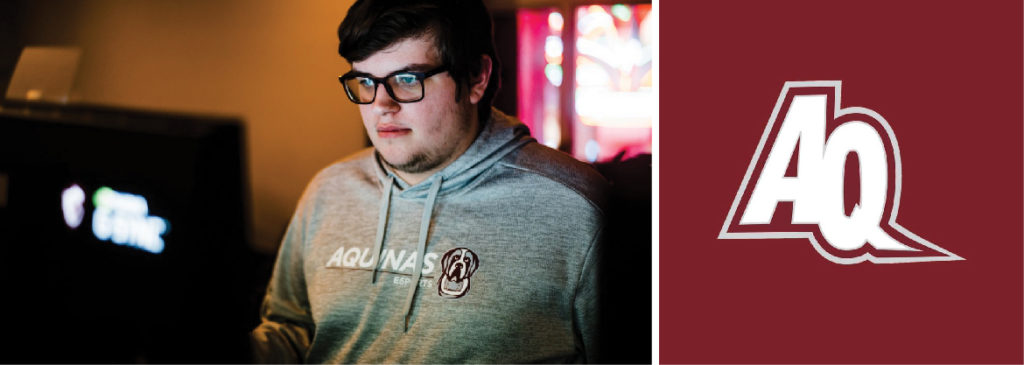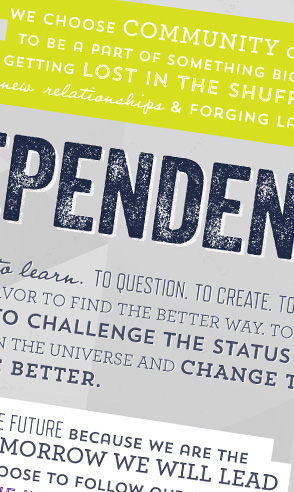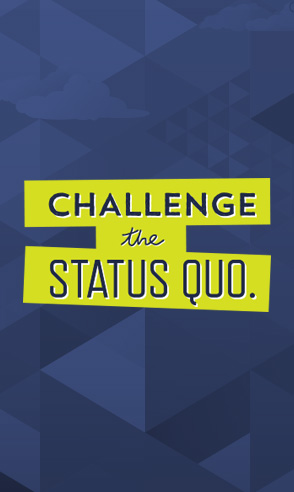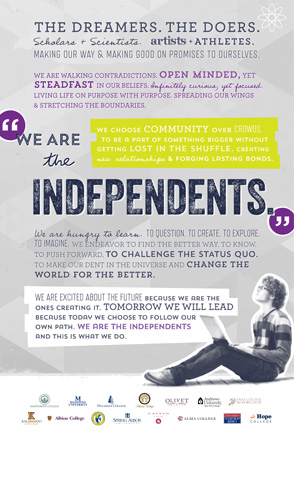Archive for
Aquinas freshman named esports All-American
Real-time strategy, teamwork, mental agility, split-second decision-making – these are some of the skills it takes to succeed in one of the fastest growing athletic programs in the country – esports.
Esports is a massive, global series of video game competitions, that is making serious inroads in the college sports arena.
The Aquinas College esports team just completed its first season and already one team member is making waves. Jon Schneck, an AQ freshman, was named an All-American by the National Association of Esports Coaches and Directors (NAECD)—one of only eight in the country.
“It was a little bit of a surprise that I would be an All-American because I don’t think of myself that highly,” Schneck said. “But it is great that I got recognized.”
Jon may have been caught off guard by the recognition, but head coach Adam Antor says it is well deserved because of his hard work and knowledge.
“He is kind of like the master knowledge base for the game,” Antor said of Schneck. “He knows more about the game than most other competitors in our program and across the country so he brings the brains and the work ethic.”
Jon competes in League of Legends. It’s a game he said he’s been playing since before he got to Aquinas. Next season, Jon plans to continue his streak. “I am looking forward to just winning in any league I’m going into,” Schneck said. “Building a better team and making sure that we can compete at the highest level against all the other teams.”
The Aquinas College team joins other Michigan private colleges and universities in offering esports. Alma College and Siena Heights University also field excellent competitive esports programs.
Aquinas, Alma and Siena Heights – and all of Michigan’s top 14 private colleges and universities – share a commitment to helping students succeed by following their own path. The colleges are smaller and emphasize community over crowds. Often less expensive than public institutions, the independents boast higher four-year graduation rates and smaller class sizes for a truly unique and affordable experience.
Be bold. Be different. Go independent.
Make Your College Campus Visits, Virtually
While in-person admissions visits at Michigan’s top 14 private colleges and universities have been canceled due to the coronavirus pandemic, prospective students can still explore these beautiful campuses with the click of a button!
With virtual tours available, you can still get the chance to “walk” the campus, see and feel what life could be like for the next four years. The online tours not only give you a peak into each campus, but many schools even allow you to schedule an online information session with a live admissions counselor! Get your questions answered and make an informed choice now from the comfort of your home.
Get more information in the links below:
Alma College Virtual Tour | Schedule a Virtual Visit
Andrews University Virtual Tour | Sign up for a Virtual Preview
Aquinas College Virtual Tour | Schedule a Virtual Personal Visit
Calvin University Virtual Tour | Schedule a Virtual Visit
Hillsdale College Schedule a Virtual Visit
Hope College Virtual Tour | Schedule a Virtual Visit
Kalamazoo College Virtual Tour | Schedule a Virtual Visit
Madonna University Campus Tour Video | Schedule a Virtual Visit
Siena Heights University Virtual Tour
Spring Arbor University Virtual Tour | Schedule a Virtual Visit
University of Detroit Mercy Virtual Tour | Sign up for a Virtual Information Session
When is the best time to visit colleges?
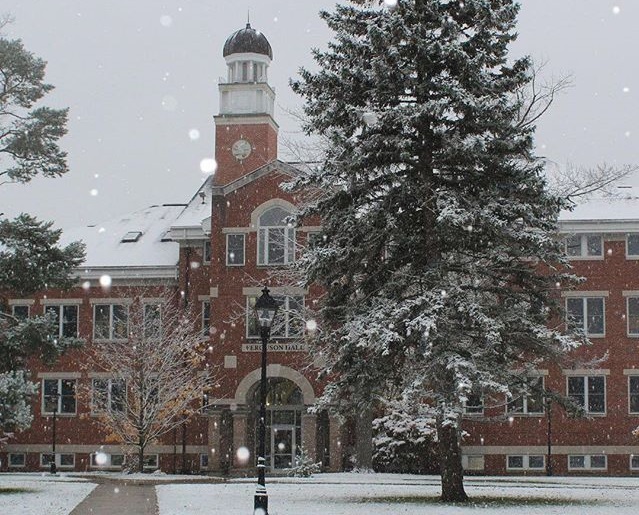
(Albion College, voted 12th Most Beautiful College in Winter)
It’s winter, and the tundra is setting in – at least it is here in Michigan. The last thing you are thinking about is planning a trip to visit campuses. Those long walks across snow-covered quads are certainly less appealing when the temperatures are teetering at the same level as the number of layers you’ll be wearing to stay warm. Or maybe you are a freshman or sophomore, and it’s just “not time yet.”
So, “When is the best time to visit?” The answer may not be what you expect. Here are some tips for getting the most out of campus visits:
Time of year:
As summer strolls in and the school year winds down, families across the country are gearing with plans to visit college campuses. Tours are crowded, staff is minimal, and quads are relatively barren. Although the summer months are more convenient for your time, ideally you should try to plan your visits when classes are in session and the campuses are full of life. Think of it like trying on a pair of new shoes: do you get the proper assessment while sitting? No, you get up, walk around, and perhaps jog in them… as it should also be done visiting campuses. Simulate the day-to-day as if you are attending the school. It doesn’t necessarily mean go in the dead of winter, but consider this: it may be cold, but it’ll also be cold while you attend, won’t it?
Age of student:
It can be very rewarding to visit colleges and universities before your junior and senior year (read: before it’s decision time). You are less concerned about choosing and “buying” when you are simply “window shopping” and more interested in checking out the inventory. Expose yourself to as many different kinds of places—big schools, small schools, research universities, liberal arts colleges, urban campuses, places way out in the country—to develop a broad perspective of all the different options. Then, when it is time to make a decision, you’ll have a better foundation on which to choose.
Before stepping foot on the first campus (and each one after that…):
Your new mantra: Relax, enjoy, decide later. Resist the impulse to judge immediately, good or bad. Your first reaction is bound to be emotional, and usually overly positive—college is really cool! Sleep on it. Weigh your impressions against the other schools you visit and try to remain as objective as possible so your rose-colored glasses don’t allow you to overlook things.
How to choose:
As you visit the campuses, allow your senses to guide you. Really like something? Take note of it. Feel like something’s missing? Take note of it. Gut instinct is usually pretty accurate. Additionally, the perceptions from your visits will come in handy when completing your college applications. Remember this: tying personal experience to the campus environment will blow the minds of the admissions department!
What to look for:
Focus on fit. We perform at our best when we have a level of comfort, belonging, and value. Questions to ask yourself: How does the college meet my academic needs? Will I be challenged appropriately? Is the style of instruction a good match for how I learn? Does the college offer a community that makes me feel “at home?” Does the college offer extracurricular activities that interest me?
After the visit, before you leave:
Connect with the recruiter. Colleges and universities typically assign admissions personnel to different areas of the country for recruiting efficiency. If your area’s recruiter is available, definitely introduce yourself. Either way, get that person’s contact information. Consider him/her as your “go to” person when you have important questions later in the admissions process. And remember this: there is nothing insignificant nor too embarrassing to ask. The admissions staff is there to help!
What to do next:
Record your visit. Make notes as soon as you are able. The more campuses you visit, the more they will begin to blend together, especially from memory. Take pictures to give yourself a visual index of what you’ve seen to avoid confusion later.
And finally:
Enjoy the process. It can be easy to get lost in the excitement and have that energy turn into anxiety. Relax. Start the search early. Visit during the school year to witness the campus’s true environment. Trust your senses and take notes.
As you map your college visit road trip, include a few of Michigan’s top 14 private colleges and universities on your list. These schools are purposefully smaller and emphasize “community over crowds.” Often comparable in cost to Michigan’s public institutions, the independents boast higher four-year graduation rates, outstanding faculty who help students forge their own paths, and smaller class sizes for a truly unique and personal experience.
Be bold. Be different. Go independent.
Kalamazoo Promise Makes Private Education Within Reach
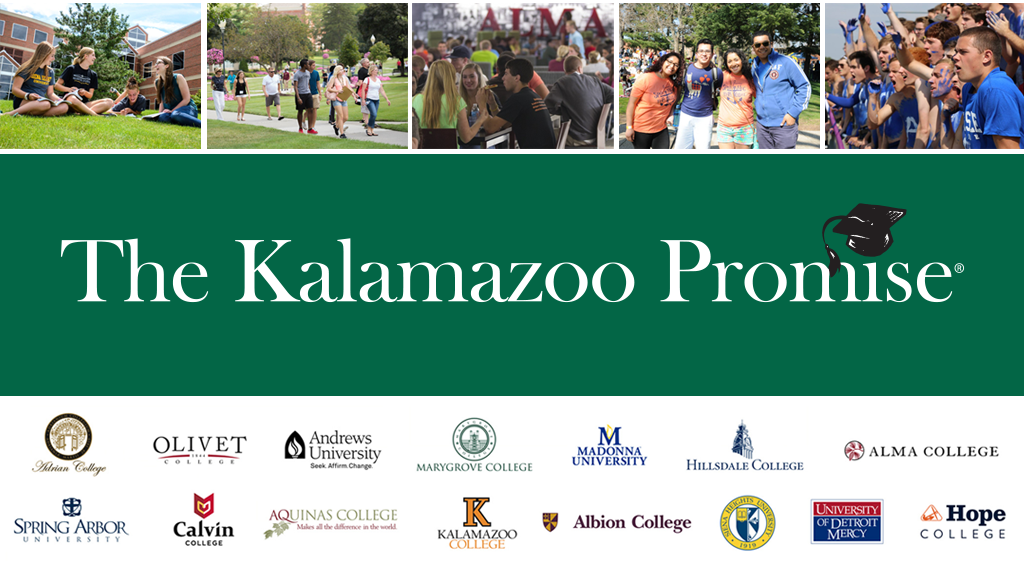
Almost everyone nowadays can cite scary statistics when it comes to the cost of college education.
Nationwide, the average annual tuition at private schools has more than tripled in 30 years jumping to $32,405 this year, according to inflation-adjusted statistics from the College Board.
But the cost of an elite private school education is nothing for students in Kalamazoo public schools.
You read that right.
The cost of Michigan’s 15 independent colleges and universities is zero for students who graduated from Kalamazoo Public Schools and attended since kindergarten. Graduates who attended since at least seventh grade will receive 75 percent of their tuition.
The Kalamazoo Promise is a revolutionary program that is changing lives and putting college in reach for 5,000 eligible graduates since it was launched and funded by anonymous donors in 2005.
The schools now send 85 percent of students to college, whose graduates can expect to earn $1 million more over their lifetime than peers whose education stopped at high school.
And what an education they can get, especially at Michigan’s independents: Adrian College, Albion College, Alma College, Aquinas College, Calvin College, Hillsdale College, Hope College, Kalamazoo College, Marygrove College, Olivet College, the University of Detroit Mercy, Andrews University, Madonna University, Siena Heights University and Spring Arbor University.
The schools pride themselves on helping students forge their own path. Classes are taught by professors, not teaching assistants, with average class sizes of just 17.5 students.
The independents open doors to a host of careers, from business and engineering to education and nursing, supported by a nurturing network of alumni who have become leaders in their fields.
And the independent colleges look like the world around them. One in 4 students at Michigan private colleges and universities is African American, American Indian, Asian, Hispanic or Latino.
Be bold. Be different. Go independent.
Passion Propels Siena Heights University Prof to Map City Architecture
 Passion isn’t just a vogue buzzword at Siena Heights University and Michigan’s top 15 independent colleges and universities.
Passion isn’t just a vogue buzzword at Siena Heights University and Michigan’s top 15 independent colleges and universities.
It’s a way of life, infusing everything from cafeteria menus that don’t taste like dorm food to professors whose love of their fields is absolutely contagious.
So when Siena Heights broke for summer, art history professor Peter Barr didn’t hit the beach. He hit his backyard, walking the streets of Adrian and cataloguing its rich architectural history for a website, adrianarchitecture.org, that offers “walking tours” of its downtown.
A quintessential small Midwestern college town, Adrian offers a periscope through a century of style. Homes built from the 1850s to 1960s are lovingly preserved and showcase more than a dozen architectural styles, from Greek revival to Colonial revival.
“It’s compact, remarkably well preserved and wonderfully serene, away from the hubbub,” Barr told told The Adrian Daily Telegram.
His website offers incredibly rich descriptions of all architectural styles and city history, along with photos, essays and other information about dozens of houses. Even for those with only a passing interest in architecture, it’s easy to lose track of time perusing the site.
“If you want information on a building, you have to come to archives and look in four, five places for all the information,” Jan Richardi, archivist at the Lenawee County Historical Society Museum, told The Telegram.
“Peter’s information is so comprehensive.”
Barr got interested in the town’s history after beginning to teach at Siena Heights 19 years ago. It’s since become a passion — and of course he’s involved his students who helped him research the homes and neighborhoods.
Such close collaboration is a hallmark of Siena Heights and Michigan’s other top 15 independent colleges and universities. Students don’t merely sit in lecture halls. They work closely with award-winning faculty, who help students find their own passion and chart their own path.
It’s a sense of community and cohesion that simply isn’t available at big state schools.
And despite what you may have heard, independents are often less expensive and boast higher four-year graduation rates that big universities.
Be bold. Be different. Go independent.
Siena Heights brings superheroes to the classroom
It’s the first day of class. Your professors walk in. Pretty normal so far, right?
Except they’re wearing superhero costumes. And they’re talking about comic books as art.
Welcome to “Comix and the Graphic Novel,” one of the most popular classes last semester at Siena Heights University. Part creative writing and part art and design, the academic mash-up emphasizes collaboration and creativity. And oh yeah: Tons of fun. Because students don’t just study writing and art. They make their own graphic novels.
“Originally, the idea was for it to be a literature course, I thought making it a creative writing and art workshop would be really exciting for students,” said Alexander Weinstein, an assistant professor of English.
One problem: He can’t draw. So he recruited Erin Zerbe, an assistant professor of photography and digital media. The two teach the class together — appearing the first day as superheroes the Mad Scientist and zerbeTRON — and emphasize both creative writing and art in a fashion that Weinstein says is “really breaking a lot of boundaries.”
Not surprisingly, it was a hit with students who filled up the class immediately.
“This is by far my favorite because it combines all the things from different classes into one,” said student Alex Hamilton. “It doesn’t matter if you’re really bad at drawing. I can do stick figures and that’s considered a comic. That’s what I love about this class.”
Doing things differently is hardly new for either professor or Siena Heights. Weinstein is an accomplished writer who founded the prestigious Martha’s Vineyard Institute of Creative Writing. Zerbe is a new media artist whose multi-media work “explores the body and its relationship to fatness, sexuality and body policing.”
The class is proudly unorthodox, and so are Siena Heights and Michigan’s top 15 independent colleges and universities. The schools aren’t afraid to mix things up and take untraditional approaches if they’re the best way to reach students. Just last year, Siena Heights based an entire chemistry class around cooking and food.
The colleges firmly believe that just because things have always been done a certain way, it doesn’t make it the best way. It’s one of many differences at Michigan independents. The schools are small enough to experiment and chart their own path. They emphasize community over crowds.
Often less expensive than public institutions, the independents boast higher four-year graduation rates and smaller class sizes for a truly unique and affordable experience.
Be bold. Be different. Go independent.
Milk Jugs & Mascots: Siena Heights and Adrian Create Unique Cross Town Rivalry

One is Catholic. The other is Methodist. One dominates at basketball. The other has a football legacy rich in championships.
Separated by three miles, Siena Heights University and Adrian College have coexisted in Adrian for nearly 100 years. Tradition, faith and academic excellence run deep at both schools in south-central Michigan. Both are fiercely small and proud, so a long and colorful rivalry was inevitable.
Consider: In 2009, Siena Heights decided it needed a mascot. The school is known as the Saints. But that didn’t seem so fierce. So students voted on an alternative and came up with Halo the Husky, in part to thumb their nose at the Bulldogs of Adrian College.
“It’s kind of a shot at Adrian College, the bulldogs, because huskies are stronger and faster,” the student who submitted the winning suggestion said.
Lo and behold, Adrian got a new mascot the next year. A live bulldog named Bruiser.
Since the 1970s, the two schools have squared off every year in basketball for “The Battle of the Milk Jug.” The trophy is exactly what it sounds like — a giant, clunky, hand-painted milk jug featuring a basketball trophy with more than a few dents that the winner keeps for a year.
The Saints have dominated, winning 28 of 36 matchups since 1977, including all games from 1988 to 2002.
Adrian has built its sports tradition on football, forming a team in 1892. Along the way, it’s won 16 conference championships, most recently in 2012.
Siena Heights waited a couple years to form a football team. More than 100, in fact. The school fielded its first team in 2012, becoming the first Catholic college in Michigan to offer football scholarships.
Both schools pride themselves on strong academics, small class sizes and molding students. Siena was founded in 1919 by the Adrian Dominican Sisters and became co-ed in 1969. Priding itself as the first wireless campus in Michigan, the university has a world-renowned creative writing program and has satellite campuses in Southfield, Benton Harbor, Monroe, Lansing, Jackson and online.
Adrian was founded by Methodists in 1859. Its campus served as a base for Union soldiers during the Civil War. Its campus is a charming mix of new and old buildings and the school prides itself on strong academics, from accounting and business to mathematics and physics.
Both embody the unique experience offered at Michigan’s top 15 independent colleges and universities. The colleges are smaller and emphasize community over crowds. Often less expensive than public institutions, the independents boast higher four-year graduation rates and smaller class sizes for a truly unique and affordable experience.
Be bold. Be different. Go independent.

